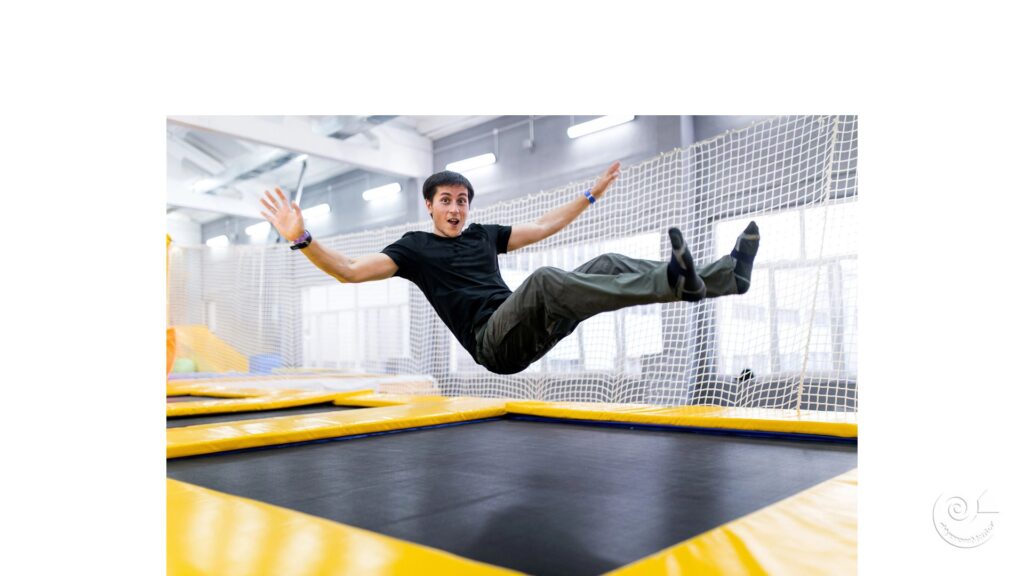Stress at work is common and can have a major impact on your well-being and performance.
Active wake hypnosis offers a powerful solution to reduce stress at work and improve your mental health.
Active Wake Hypnosis, also known as alert hypnosis, is a form of hypnosis in which the client is in a state of alert awareness and the hypnotist performs a hypnotic induction while the client is still able to talk and respond.
This makes it an effective addition for therapists, coaches, psychologists and physical therapists looking for ways to help their clients achieve various goals.
What is stress at work and how does it affect you?
Stress at work arises from a combination of work pressure, poor communication and lack of control.
This form of stress can lead to physical symptoms such as headaches, fatigue and sleep problems.
It also causes emotional problems, such as irritability, difficulty concentrating and anxiety.
Active wake hypnosis helps with stress at work
Active wake hypnosis is an effective method for addressing stress at work.
By entering a state of heightened wakefulness, you can better deal with the causes of stress.
This technique helps you turn negative thoughts into positive, calming images.
History and state of research
 Over time, various forms of hypnosis were developed, including Active Wake Hypnosis.
Over time, various forms of hypnosis were developed, including Active Wake Hypnosis.
Active Wake Hypnosis differs from other forms of hypnosis in that the client remains in a state of alert awareness during the hypnotic induction.
This means that the client is still able to talk and respond, which can lead to a more active and engaged process for the client.
Much scientific research has been done on hypnosis and its effectiveness in achieving various goals.
For example, Banyai and Hilgard (1976) researched hypnosis in improving athletic performance.
They found that hypnosis can help increase concentration and motivation, which can lead to better performance.
Miller, Barabasz and Barabasz (1991) researched hypnosis in giving excellent presentations.
They found that hypnosis can help overcome nerves and increase self-confidence, which can lead to better presentations.
Marianne Barabasz (Barabasz & Barabasz, 1996) researched hypnosis in overcoming stuttering.
She found that hypnosis can help improve speech through exercises and ego strengthening.
Banyai, Zseni, and Tury (1993) researched hypnosis in passing exams.
They found that hypnosis can help increase concentration and motivation, which can lead to better performance during exams.
Banyai & Hilgard (1976) also researched hypnosis in increasing concentration.
They found that hypnosis can help focus attention on specific task or goal, which can lead to improved concentration.
Bandler (1975) developed the Swish method, which can be used to help clients concentrate and increase their motivation.
Applications of Active Wake Hypnosis
 Active Wake Hypnosis can be used for various goals, such as overcoming stuttering, giving excellent presentations, passing exams, increasing concentration and overcoming motivation problems.
Active Wake Hypnosis can be used for various goals, such as overcoming stuttering, giving excellent presentations, passing exams, increasing concentration and overcoming motivation problems.
Below we discuss some specific applications of Active Wake Hypnosis:
- Overcoming Stuttering: Active Swish Hypnosis can be used to overcome stuttering through exercises and ego strengthening.
The Swish method can also be used to help the client improve his or her speech. - Excellent presentations: Active Wake Hypnosis can be used to overcome nerves and increase self-confidence, which can lead to better presentations.
- Passing Exams: Active Wake Hypnosis can be used to increase concentration and motivation, which can lead to better performance during exams.
- Increasing Concentration: Active Wake Hypnosis can be used to focus attention on specific task or goal, which can lead to improved concentration.
The Swish method can also be used to help the client concentrate. - Overcoming Motivational Problems: Active Vigil Hypnosis can be used to increase motivation through exercises and ego strengthening.
The Swish method can also be used to help the client increase motivation.
Self hypnosis
You can use active wake hypnosis to learn self-hypnosis.
With self-hypnosis, you put yourself into a state of hypnosis to achieve specific goals.
You do this, for example, by using a recorded hypnosis induction or by applying techniques such as visualization and affirmations.
With self-hypnosis you reduce stress, increase your self-confidence and improve your concentration.
Ego enhancement
Active Vigil Hypnosis can also be used to strengthen the client’s ego.
You achieve this by applying exercises and affirmations aimed at strengthening self-confidence and self-image.
With a stronger ego, you can handle stress and challenges better and perform better in various situations.
Regression in Active Wake Hypnosis and Abreactions
Active Wake Hypnosis can also be used for regression, which means the client goes back to a previous time or experience.
This can help process certain emotions or memories that were not properly processed at that time.
Regression can also lead to abreactions, which means the client reacts emotionally to the experience or memory.
Abreactions can help process emotions and lead to insights and changes.
Partotherapy with Active Wake Hypnosis
Active Wake Hypnosis can also be used in partotherapy, which means that the client goes into hypnosis and communicates with different parts of themselves.
These parts can be, for example, the inner child, the inner critic or the inner judgment.
Part therapy can help resolve conflicts between these parts and lead to insights and changes.
Resources
 Active Wake Hypnosis can also be used to help the client identify and strengthen personal positive resources.
Active Wake Hypnosis can also be used to help the client identify and strengthen personal positive resources.
These resources may include self-confidence, self-acceptance, self-compassion, self-esteem, assertiveness, self-control, social skills and emotional intelligence.
By strengthening these resources, the client can better cope with challenges and stress.
Swish as a method for re-anchoring
You can use the Swish method to improve your concentration and increase your motivation.
Richard Bandler developed this technique in 1975, and you can combine the method with active wake hypnosis.
The Swish method works by replacing unwanted thoughts or behaviors with desired thoughts or behaviors, using visualization and affirmations.
Use this technique, for example, to overcome nerves before a presentation or to strengthen your concentration while studying for an exam.
More information on dates and registration via this link.


